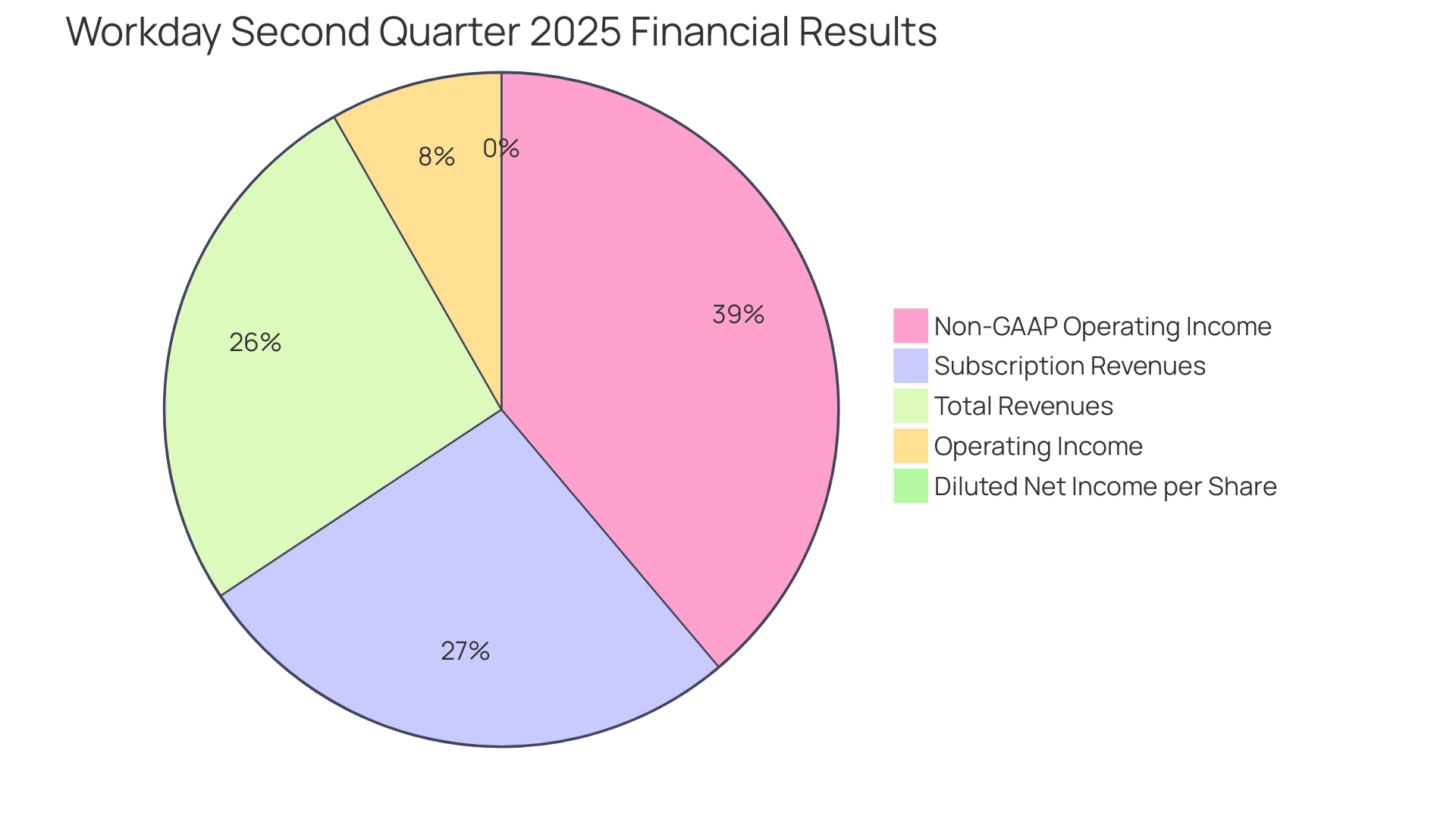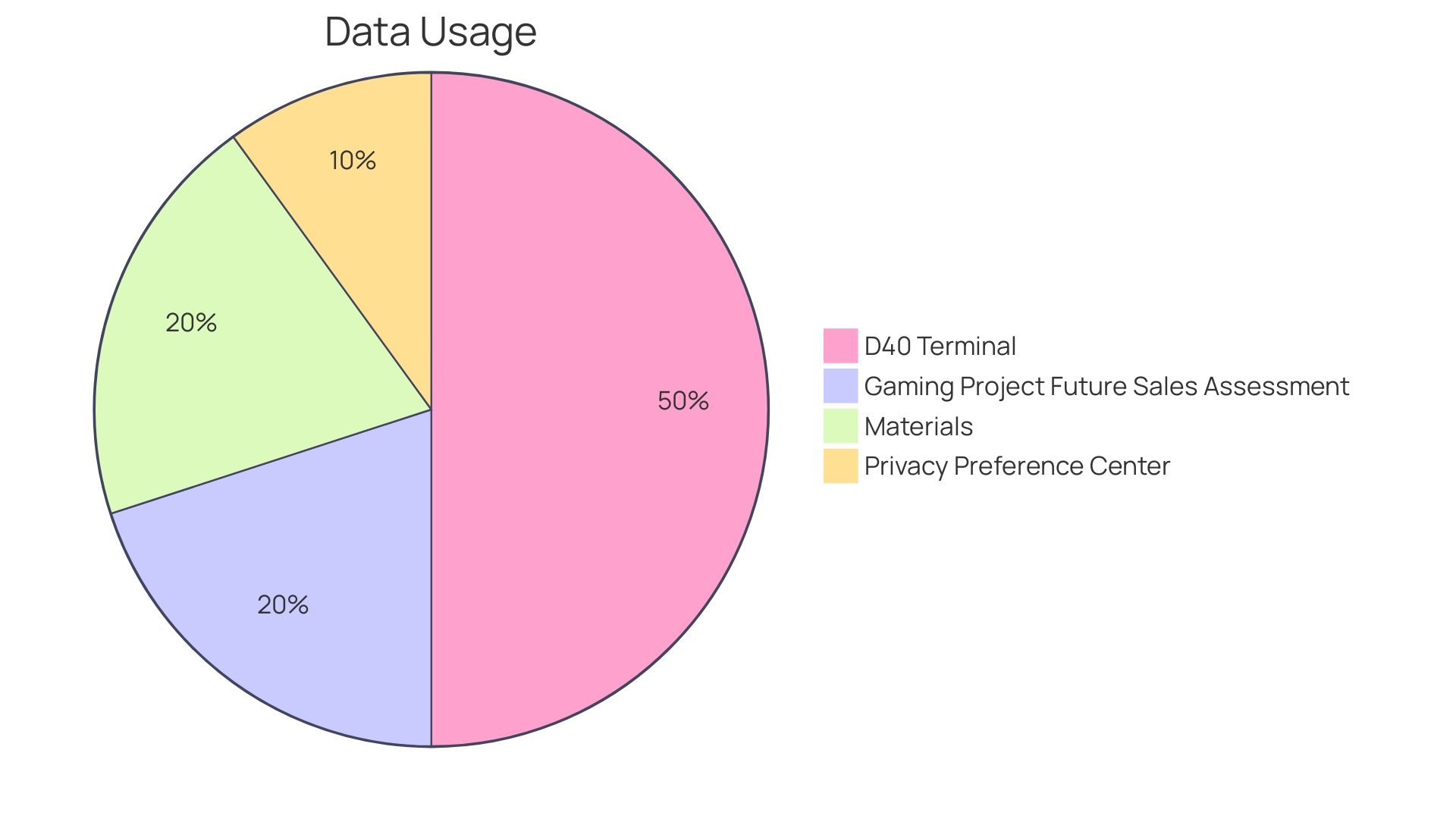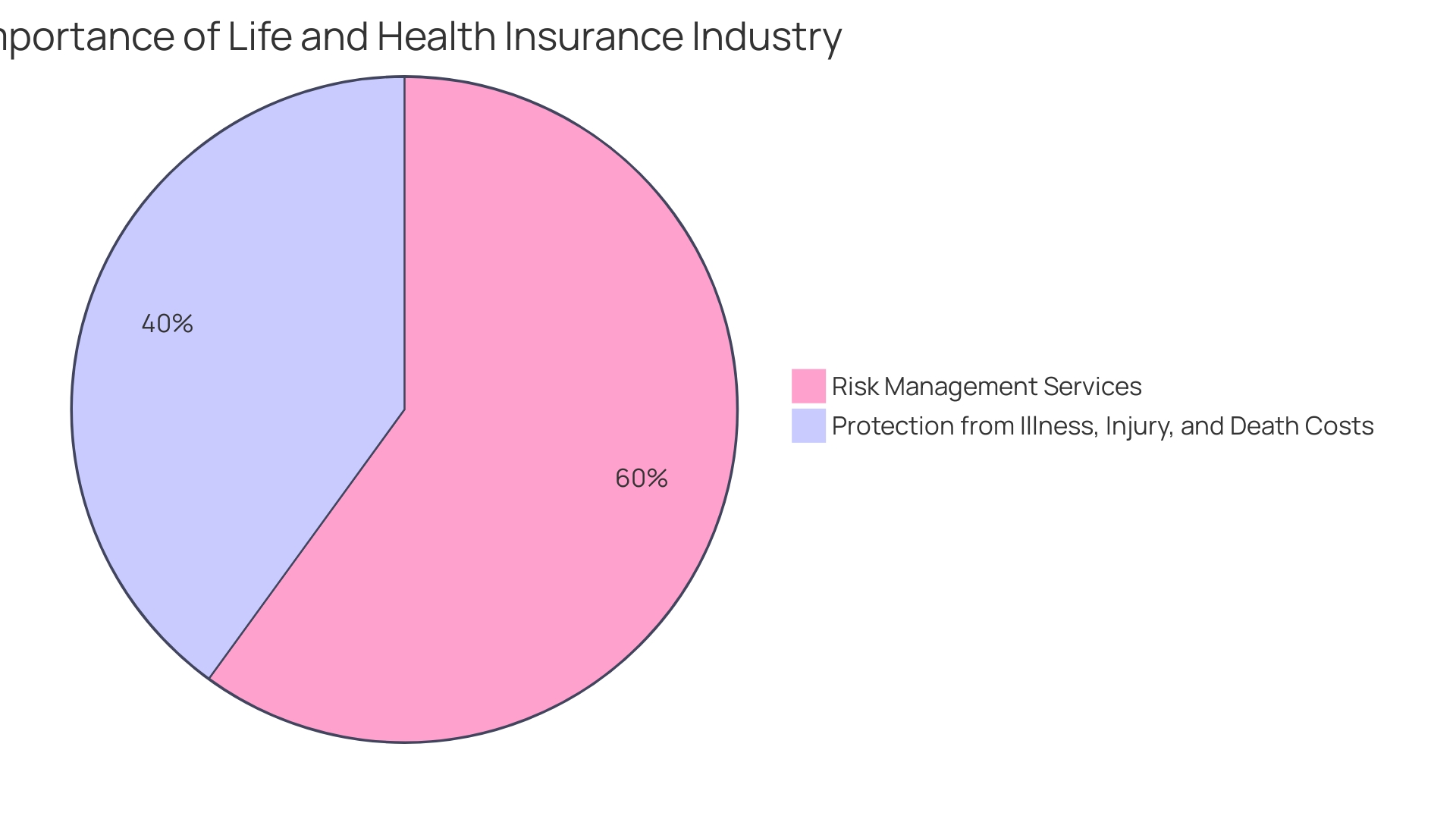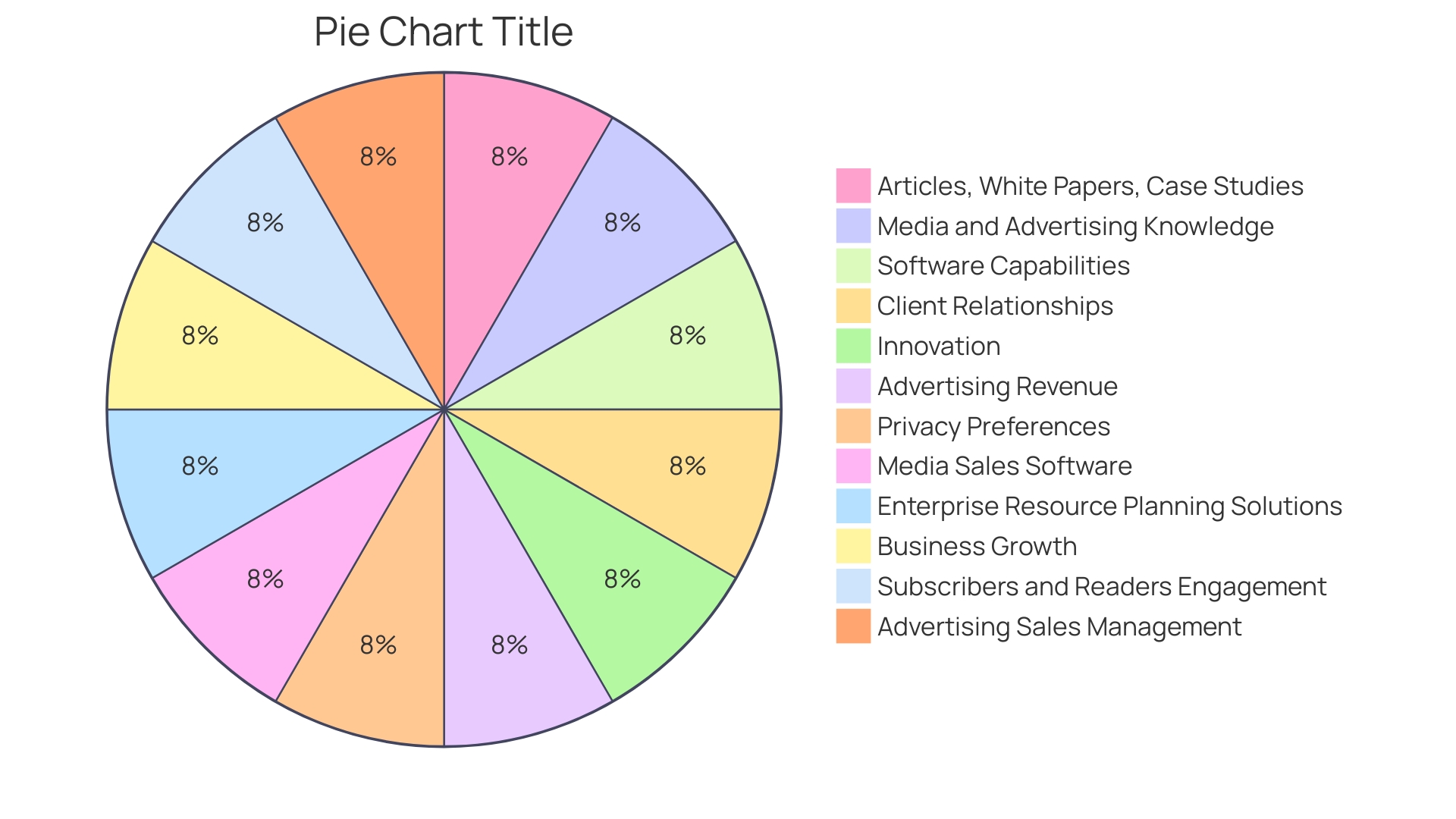Introduction
In today's ever-changing market, the ability to accurately predict and navigate business outcomes is essential for success. That's why business forecasting tools have become indispensable for companies of all sizes. These tools empower organizations to make informed decisions and strategic plans based on data-driven insights.
By leveraging advanced statistical analysis and data mining techniques, businesses can analyze a wealth of information from various sources and transform it into actionable forecasts. From revenue planning to sales management and demand forecasting, these tools offer comprehensive solutions to guide decision-making. With the power of AI and machine learning, these tools provide real-time updates and customizable models to adapt to the unique needs of each business.
By integrating these forecasting tools into their operations, companies can optimize resource allocation, refine sales strategies, and achieve sustained growth in today's competitive landscape. So, let's explore the key features to look for in business forecasting tools and the benefits they bring to the table.
Why Use Business Forecasting Tools?
Business prediction tools are essential for navigating the complexities of today's market. Armed with the appropriate prediction tools, companies can make more precise predictions and well-informed decision-making. Monte Carlo Simulations, for instance, have been embraced by enterprises operating with on-premise products, allowing them to effectively schedule releases and align with critical customer delivery timelines, even when the product needs to be physically shipped.
Analyzing a wealth of information is the foundational step in business forecasting. Organizations must collect information from various sources like internal databases, social media, and market research. The collected information is then meticulously cleaned and formatted for analysis. Statistical analysis and data mining are among the techniques used to analyze and explore this dataset, uncovering crucial insights for informed forecasting.
Science plays a vital role in this process, converting raw information into valuable insights through statistical modeling and machine learning. This analytical capacity enables organizations to predict future performance by analyzing current and past information, which is crucial in establishing and tracking budgets.
Backing this, the Global State of Analysis Report, which surveyed over 4,400 professionals worldwide, highlights the growing significance of analysis in today's industries. The report emphasizes how business analytics is driving transformation, indicating that businesses embracing these tools are better positioned for strategic decision-making.
It is these tools and the data-driven culture they foster that can empower even non-technical employees to contribute to a company's strategic goals. For instance, Holiday Extras, a European travel extras provider, has leveraged data literacy to amplify its reach and operational efficiency across multiple markets and languages.
In conclusion, as the fiscal landscape continues to evolve, the ability to distinguish between budgeting and predicting future financial trends becomes more crucial. While budgeting sets financial goals, making predictions based on past and present performance is used to guide those goals, as noted in the insightful quotes about the relationship between these two financial activities. With strong tools for projecting the future of their operations, organizations can navigate the uncertainties of the market with confidence and precision.
Clockify - Best for Time-Tracking and Project Forecasting
Clockify transcends mere time tracking, offering a dual-edge advantage of project foresight alongside meticulous task time measurement. This platform is instrumental in dissecting the intricate web of time investment across various company endeavors. By harnessing Clockify's insights, companies can refine their resource distribution and crystallize their project strategies.
Houston County School District's leap to bi-monthly payroll underscored the urgency for an efficient time-tracking system, eliminating the burden of manual time entry for a diverse employee base. Similarly, educational publisher Twinkl harnessed Toggl Track to precisely allocate time for market campaigns, mirroring the educational curricula across the globe. Bosch's innovation in green energy, anchored by the digital twin technology of its SOFC system, reflects a commitment to sustainable engineering and operational optimization.
Contrastingly, GanttPRO has emerged as a favored tool in construction project management, offering visual Gantt chart timelines that are intuitive across varying levels of technical expertise. This tool not only simplifies schedule creation but also acts as a safeguard against prevalent project delays in the construction sector.
Agile methodologies, with their iterative sprints and customer feedback loops, have transcended their software development origins to become a go-to framework for a range of teams seeking flexible project management. Tools like Trevor and Timely exemplify this trend, with Trevor's drag-and-drop system simplifying time management and Timely's automated tracking enhancing productivity analysis.
The lessons from Toyota's Woven Planet venture serve as a cautionary tale, underscoring the importance of a clear vision aligned with execution capabilities. Moreover, resource prediction is a crucial stage in project management, as demonstrated by the web development project instance, which highlights the importance of defining project requirements and tasks for effective resource allocation.
These case studies and tools reflect a broader narrative in the world of project management and time tracking: the relentless pursuit of efficiency, productivity, and strategic foresight. They are testaments to the power of technology in reshaping how businesses manage their most valuable asset—time.
Anaplan - Advanced Forecasting for Revenue Planning
Anaplan's state-of-the-art capabilities in predicting extend beyond traditional revenue planning by incorporating not just historical data, but also a keen understanding of market trends and various external factors that impact consumer behavior. Its advanced method of prediction considers the intricacies of macro trends, social dynamics, technological progress, geopolitical events, and even the repercussions of global phenomena like the COVID-19 pandemic and the Ukraine war. These are essential considerations for creating more accurate revenue forecasts, which are critical for businesses navigating the complexities of today's consumer landscape. By embracing this comprehensive forecasting model, companies are better equipped to make strategic financial decisions that align with the ever-changing market demands and consumer preferences.
Workday Adaptive Planning - Comprehensive Sales Planning
Workday Adaptive Planning stands as a strong platform for improving sales forecasting. Leveraging this tool, companies can establish dynamic sales forecasts, scrutinize sales performance, and refine sales strategies to elevate profitability. Embraced by over 10,000 organizations globally, including more than half of the Fortune 500, Workday's solutions are instrumental in navigating complex business landscapes.
The utility of Workday Adaptive Planning is exemplified by Wild, a fast-growing sustainable personal care brand. Faced with a staggering 441% average annual growth, Wild transitioned from rudimentary spreadsheet-based planning to Workday's sophisticated platform, achieving an interconnected planning environment capable of processing vast amounts of data. This shift has not only streamlined Wild's planning processes but is anticipated to bolster forecast accuracy to 95%, reduce planning time, and facilitate swifter, more precise decisions.
A well-organized sales strategy starts with sales managers establishing long-term organizational goals. Sales managers then craft an annual plan to meet these targets, continuously adapting to market fluctuations. Decisions on hiring, quotas, compensation, territories, and customer segments are made. Sellers translate this broader plan into account strategies to secure individual deals. The benefit lies in using existing resources to accomplish objectives by identifying and fixing process deficiencies in the realm of commerce.
Gatherings serve an essential function in sales preparation, with an astonishing 11 million conducted daily in the U.S. alone. Despite this frequency, a mere 30% of meetings are deemed productive. The deployment of a strong revenue planning tool such as Workday Adaptive Planning has the potential to save a substantial portion of the $37 billion lost each year due to unproductive meetings.
The importance of meticulously planning for high-stakes periods, such as the healthcare industry's Medicare Annual Enrollment Period, is also highlighted by experts. Here, effective planning is likened to preparing for an Alaskan harvest, where a short but critical period dictates annual success. Tools like Workday Adaptive Planning are pivotal in such scenarios, providing the clarity and agility needed to navigate high-pressure environments.
Supporting the achievement of sales planning are Key Performance Indicators (KPIs), which Peter Drucker famously endorsed with, 'What gets measured gets managed.' Tracking KPIs provides direct insight into the health of a company, informing financial, operational, and customer service strategies.
In conclusion, Workday Adaptive Planning emerges as a vital resource for organizations intent on refining their sales planning processes, thus driving strategic decision-making and promoting sustained growth.

Avercast - Demand Planning and Business Intelligence
In the ever-changing realm of commerce, the capacity to anticipate market demand is a game-changer. Sophisticated tools like Avercast are revolutionizing the realm of demand planning with their advanced algorithms and data analysis capabilities. These systems enable companies to refine their inventory management, leading to substantial cost savings and heightened customer satisfaction.
Take, for instance, the innovative approaches companies like Spotify have adopted. By expanding into video podcasts, they've witnessed a surge in user engagement, which underscores the significance of adapting to consumer preferences. In the same way, Avercast's demand prediction helps companies stay ahead by ensuring they have the appropriate products at the correct time.
Additionally, the triumph of Filson's online sales projection, which accomplished an astonishing 99.6% precision for a month throughout the festive period, demonstrates the accuracy that can be attained with a strong prognostication model. Insights from Retail Technology Review further emphasize the importance of making high-quality decisions based on accurate demand forecasts to avoid stockouts and ensure timely delivery.
With the constantly growing intricacy of the market, tools like Avercast are not just luxuries but necessities for enterprises aiming to prosper in a competitive landscape. They offer a crystal-clear view of future demand, enabling firms to optimize their operations and deliver exceptional value to their customers.
Clari - Sales Forecasting and Revenue Intelligence
Leveraging the potential of AI, Clari has emerged as a leading player in transforming revenue projection and intelligence. It goes beyond traditional methods by integrating real-time information and advanced analytics, enabling businesses to navigate an increasingly complex consumer landscape with precision. This groundbreaking tool utilizes AI algorithms not just to analyze previous sales information but also to integrate external variables such as market trends, social dynamics, and global events. By doing so, Clari provides a comprehensive and forward-looking view, crucial for companies to stay adaptive and optimize sales strategies amidst ever-shifting consumer preferences.
Clari's approach addresses the limitations of conventional forecasting techniques that often miss the mark due to their reliance on historical data alone. The tool's predictive capabilities factor in the nuances of global influences, such as the economic aftereffects of the Covid-19 pandemic, geopolitical tensions, and inflationary pressures, all of which have reshaped consumer buying behaviors. These insights are invaluable for businesses, particularly in sectors like healthcare, where staffing and resource allocation are critical, and traditional manual reporting methods are no longer sustainable.
In the wider framework, the recent implementation of AI models such as xGen-Sales and xLAM by Salesforce indicates the industry's move towards AI-powered automation to improve effectiveness in sales operations. The significance of such tools in automating complex sales tasks and enabling data-driven forecasting cannot be overstated, as they empower companies to make informed decisions and maintain a competitive edge in the fast-paced market.

Nektar - Revenue Intelligence and Automated Tracking
Nektar stands out as a revenue intelligence platform that excels in the automated tracking and analysis of critical financial metrics. It is designed to empower enterprises with the capability to closely monitor revenue flows, uncover lucrative opportunities for growth, and fine-tune pricing strategies to enhance profitability.
Using advanced techniques like information aggregation and mining, Nektar offers a clear and comprehensive understanding of past financial information. This deep dive into past trends and patterns is instrumental for businesses in grasping their operational performance and steering future strategies.
A standout example of revenue management's impact is found in the hospitality industry. Here, systems are traditionally designed to forecast future demand based on historical trends to adjust pricing accordingly. However, Nektar's approach goes beyond the conventional, leveraging current trends to predict future demand, thereby offering a dynamic edge in pricing strategy formulation.
Moreover, revenue management systems such as Nektar can significantly optimize purchasing decisions and service offerings. They enable pinpointing of the most valuable customers at the optimal moment, ensuring bookings and maximizing revenue. This was vividly demonstrated during the pandemic when revenue management systems provided a competitive advantage by adapting to the volatile market demands, showcasing the importance of real-time information in uncertain times.
Nektar's platform also excels in user-friendliness, making information accessible to all stakeholders within an organization. This ease of access ensures that complex reports, which previously might have been a challenge for teams outside the revenue management department, are now readily understandable, allowing for actionable insights with just a few clicks.
Furthermore, Nektar's ability to integrate with multiple sources is noteworthy. Whether it's website analytics, social media interactions, CRM information, or financial systems, Nektar can consolidate this into a coherent dashboard that offers a single, visual representation of key metrics and performance indicators.
In a quickly changing economic environment, where data-based decision-making is crucial, platforms like Nektar are becoming essential tools for achieving financial health and operational efficiency. Enterprises at the forefront of information and analysis, similar to those showcased in the Analytics Impact Index, showcase the revolutionary potential of such instruments, emphasizing the requirement for organizations to embrace and utilize these remedies to maintain competitiveness.

Mediafly (InsightSquared) - Customer Buying Behavior Insights
Mediafly, previously recognized as InsightSquared, has become instrumental in providing businesses with crucial insights into customer purchasing tendencies. Through thorough examination of sales information and customer interaction, Mediafly reveals patterns, preferences, and potential opportunities. This empowers companies to craft more effective strategies that resonate with their target market.
Utilizing analytics tools like Amplitude Analytics, as demonstrated by a product manager's pursuit to comprehend customer behavior for online courses, Mediafly similarly harnesses information to respond to crucial inquiries about customer habits. Insights gained from this data inform not only marketing and sales strategies but also influence product design and presentation.
As industry partnerships and creative marketing endeavors become increasingly vital in the face of budget constraints, understanding customer behavior is more important than ever. The collaboration between McDonald's and Crocs is a testament to the power of leveraging consumer insights to drive successful partnerships and product launches.
Furthermore, with the recognition that existing customers account for a significant portion of revenue, the insights provided by Mediafly's analysis are critical for optimizing retention strategies. By comprehending the post-acquisition value of customers, enterprises can make informed decisions on where to allocate resources for maximum profit optimization.
In sum, the convergence of analytics and strategic decision-making, as embodied by Mediafly's capabilities, underscores the significance of data-driven insights in today's competitive business environment.

Creatio - Centralized Sales Management and Forecasting
Creatio has transformed the manner in which organizations manage sales administration and prediction by providing an advanced, centralized platform that not only enhances sales procedures but also enhances prediction precision to a high degree. This system empowers teams with a panoramic view of business activities, key performance indicators, and fosters a collaborative environment for precision in sales planning.
For example, Holmes Murphy, a significant player in the insurance brokerage industry, revolutionized their business operations by harnessing such advanced prediction models, eliminating data silos and manual processes that formerly impeded efficiency. This strategic move not only saved them millions of dollars but also countless hours, enhancing client experiences in the process.
Likewise, Filson's e-commerce revenue projection experienced notable enhancements with a customizable model offered by Bamboo's growth insights service. This model, which incorporates modifiable inputs such as customer lifetime value and acquisition cost, in addition to advertising investments, projected Filson's revenue with near-perfect accuracyâone month's revenue were predicted at 99.6% of the actual result.
These real-world success stories highlight the potential influence of advanced sales management tools on a business's financial outcome. With such tools, companies are able to make well-informed decisions, optimize their revenue mix, and execute strategies that are closely aligned with Management by Objectives (MBO), thus ensuring a balanced and profitable approach.
The importance of these tools is further accentuated by insights from thought leaders in the field. For instance, plans for revenue generation are recognized as crucial in leveraging current resources to achieve goals, as they expose and address deficiencies in the sales process. Furthermore, the rise of Mutual Action Plan (MAP) platforms highlights the shift towards enhanced visibility and responsibility in the sales process, simplifying communication between buyers and sellers.
In the age of data-based decision-making, the significance of precise and ever-changing sales prediction cannot be emphasized enough. As organizations aim to improve their sales strategies and reporting, the integration of advanced tools and analysis techniques becomes not just a luxury, but a necessity for management and profit optimization.
Key Features to Look for in Business Forecasting Tools
For businesses aiming to stay ahead in dynamic markets, selecting the right forecasting tools is pivotal. Critical features to look for include:
-
Advanced data analysis capabilities: Essential for delving deep into data and extracting actionable insights. As data-driven companies consider their data a valuable asset, advanced statistical analysis is crucial for turning data into a competitive advantage.
-
Integration with existing enterprise systems: Smooth connectivity between prediction tools and other enterprise systems is crucial for a cohesive workflow, as demonstrated by companies that oversee intricate operations across different markets and languages.
-
Adaptable prediction models: Versatility in modeling aids in addressing specific organizational requirements and situations, similar to companies that utilize advanced methods like Monte Carlo Simulations to strategize product launches in alignment with crucial infrastructure demands.
-
Real-time data updates: To keep up with rapid market changes, immediate data refreshes ensure that the prediction is based on the most current information.
-
Scalability: As businesses grow, their tools must evolve accordingly, supporting expansion without losing performance or accuracy.
-
User-friendly interface and intuitive reporting: Ensuring that all team members, regardless of technical proficiency, can utilize the prediction tools to their full potential.
Incorporating these features into your forecasting toolkit not only elevates your ability to make informed decisions but also aligns with industry practices where budgeting and forecasting are used to set and monitor financial goals, as they are deeply intertwined yet distinct financial activities.
Benefits of Using Business Forecasting Tools
By utilizing sophisticated predictive analytics, like Monte Carlo simulations, it improves the accuracy of revenue and income predictions, enabling more effective strategic planning and allocation of resources. Utilizing business intelligence (BI) tools converts raw information into actionable insights, enhancing inventory management and enabling cost optimization. - Data-driven decision-making, fueled by AI and machine learning, leads to more profitable outcomes and streamlines sales processes for peak performance. The incorporation of predictive models, which analyze past information to detect patterns, supports growth forecasting and demand planning, contributing to a strong competitive advantage. - As emphasized in 'How Big Things Get Done', while plans may evolve, the act of planning—using data and forecasts—is crucial for navigating the dynamic business landscape and achieving sustained success.

Conclusion
In conclusion, business forecasting tools are indispensable for companies aiming to thrive in today's market. These tools empower organizations to make informed decisions and strategic plans based on data-driven insights. By leveraging advanced statistical analysis and data mining techniques, businesses can transform a wealth of information into actionable forecasts.
Integrating forecasting tools into operations allows companies to optimize resource allocation, refine sales strategies, and achieve sustained growth. With the power of AI and machine learning, these tools provide real-time updates and customizable models to adapt to each business's unique needs. They enable accurate predictions and informed decision-making, ensuring companies stay ahead in dynamic markets.
When selecting forecasting tools, key features like advanced data analysis capabilities, integration with existing systems, customizable models, real-time updates, scalability, and user-friendly interfaces should be considered. These features enable businesses to extract insights, ensure a unified workflow, cater to specific needs, keep forecasts up to date, support growth, and facilitate effective utilization.
The benefits of using business forecasting tools are significant. They enhance the precision of sales and revenue forecasts, optimize inventory management, streamline sales processes, support growth forecasting, and provide a competitive advantage. Planning based on data and forecasts is crucial for navigating the dynamic business landscape and achieving sustained success.
In today's fast-paced market, businesses need to leverage the power of forecasting tools to make informed decisions, optimize operations, and stay ahead of the competition. With the right tools and a data-driven culture, companies can confidently navigate uncertainties and achieve sustained growth.
Start leveraging business forecasting tools today and thrive in the competitive market!




